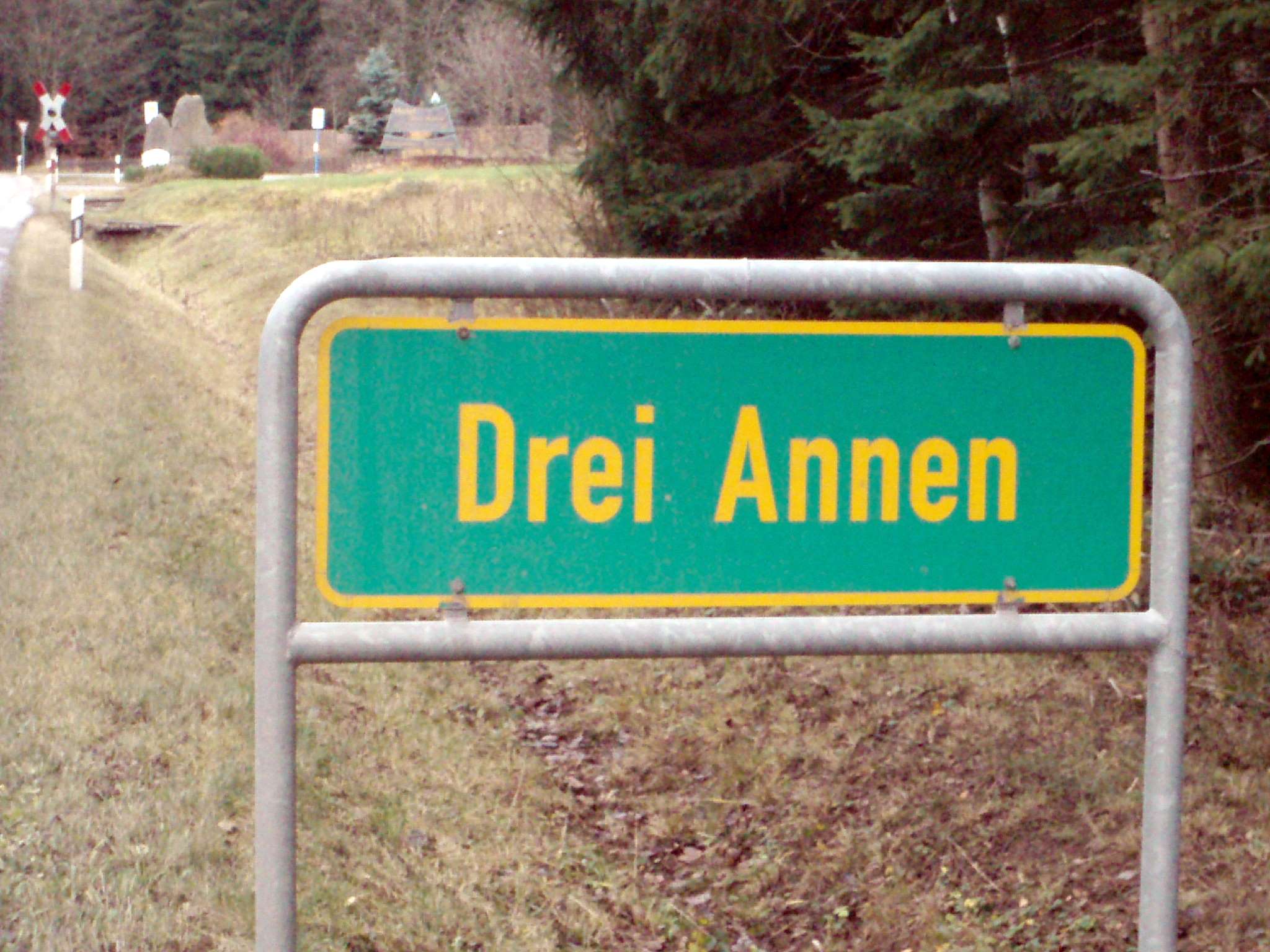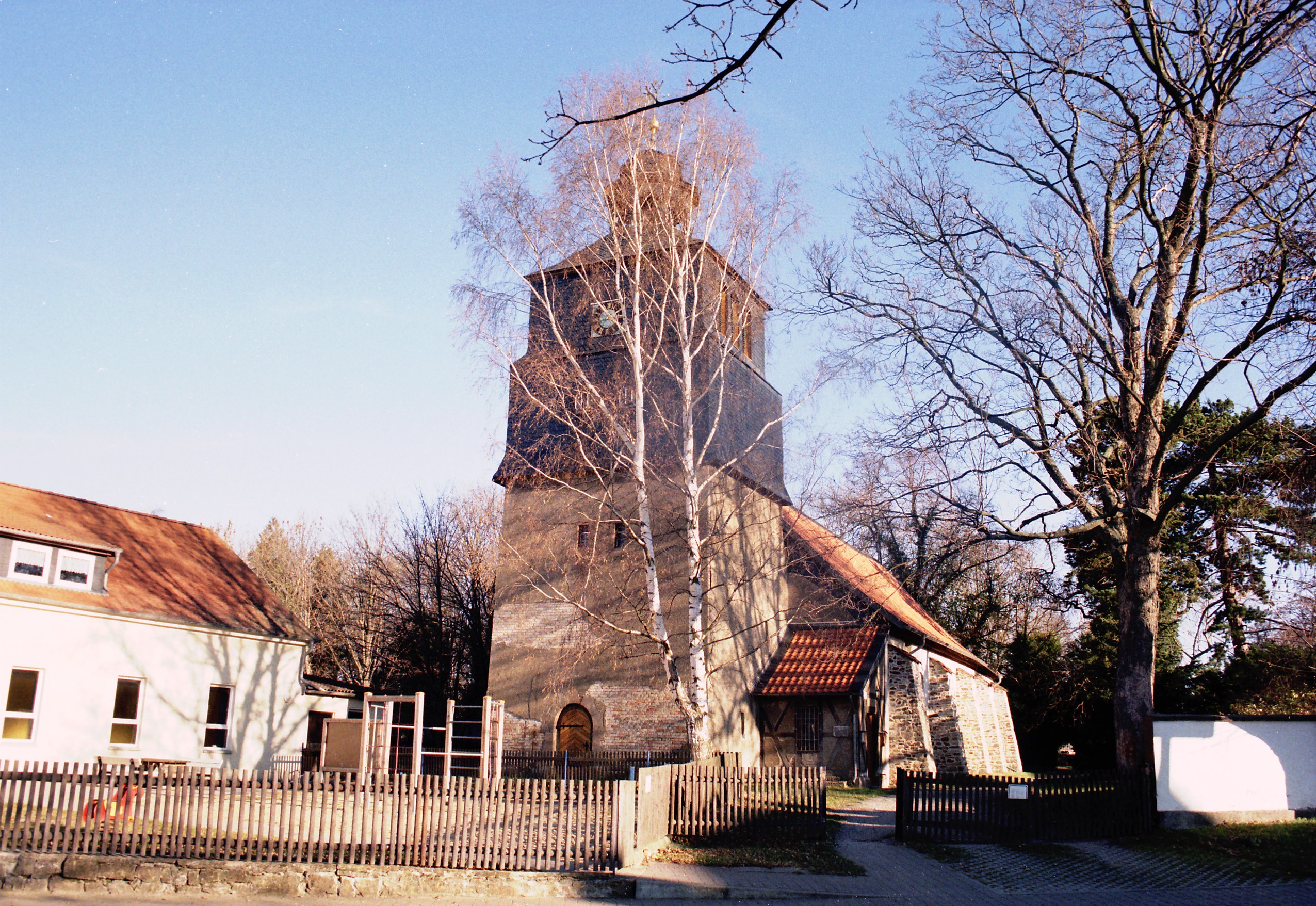|
Drei Annen Hohne
Drei Annen Hohne is the name of a small settlement within the municipal area of Wernigerode in Saxony-Anhalt, Germany. The place is located about southwest of the town within the Harz mountains, on the northeastern edge of the Harz National Park. It is accessible from the road from Wernigerode to Schierke, an eastern branch–off leads to Elbingerode. Drei Annen Hohne is also a stop on the narrow gauge Harz Railway line from Wernigerode to Nordhausen, as well as of the Brocken Railway, which branches off south of the station. History The remarkable name ''Drei Annen'' ("Three Annes") was first mentioned in 1770, when the lord of the manor, Count Christian Frederick of Stolberg-Wernigerode sanctioned the mining of copper and silver at the place, reserving mine shares for himself and his mother Princess Christiane Anna of Anhalt-Köthen, his newborn daughter Anne, and his neonate niece Anna Emilia, daughter of his brother–in–law Prince Frederick Erdmann of Anhalt-Pless. The min ... [...More Info...] [...Related Items...] OR: [Wikipedia] [Google] [Baidu] |
Drei Annen
Drei may refer to: * Drei (Glashaus album), ''Drei'' (Glashaus album), a 2005 album by pop band Glashaus * Drei (Emika album), ''Drei'' (Emika album) (stylised form: ''DREI''), a 2015 album by electronic artist Emika * Three (2010 film), ''Three'' (2010 film), a German film called ''Drei'' in German * Drei Oesterreich, Austrian mobile phone provider People with the surname * Alisa Drei (born 1978), Finnish figure skater * José Luis Drei (born 1973), Brazilian football player * Umberto Drei (1925–1996), Italian racing cyclist {{Disambiguation ... [...More Info...] [...Related Items...] OR: [Wikipedia] [Google] [Baidu] |
Otto Of Stolberg-Wernigerode
Otto Graf (From 1890, Fürst) zu Stolberg-Wernigerode (30 October 1837 – 19 November 1896) was an Imperial German politician and the vice-chancellor of the German Empire. Life He was born at Gedern Castle, Hesse, the third and last child of Count Hermann zu Stolberg-Wernigerode (1802–1841, himself a son of Henry of Stolberg-Wernigerode) and his wife Countess Emma zu Erbach-Fürstenau (great-granddaughter of George Albert III, Count of Erbach-Fürstenau). The ancient noble House of Stolberg had been quasi-sovereign rulers of their County of Stolberg-Wernigerode until the German Mediatisation, when they came under the jurisdiction of Prussia in 1815. His elder brother Albert (Albrecht) died, when he was four years old, his father died shortly afterwards from grief over the loss. Having been schooled in Duisburg, he read law and administration science at the universities of Göttingen and Heidelberg. Between 1859 and 1861, he served as a cavalry officer in the Garde ... [...More Info...] [...Related Items...] OR: [Wikipedia] [Google] [Baidu] |
Stapelburg
Stapelburg is a village and a former municipality in the district of Harz, in Saxony-Anhalt, Germany. Since 1 January 2010, it is part of the Nordharz municipality. Geography It is located at the northern foot of the Harz mountain range and Harz National Park, about north of the town of Ilsenburg. The small Ecker river in the west, a tributary of the Oker, forms the border with the town of Bad Harzburg in Lower Saxony. The settlement has access to the Bundesstraße 6 federal highway running from the Bundesautobahn 395 near Goslar to Halle and the Bundesautobahn 14. Stapelburg station is served by the Vienenburg-Halberstadt railway line. History Stapelburg Castle was first mentioned in a 1306 deed as a property of the Counts of Wernigerode; it was meant to protect and control the trade route to the Imperial City of Goslar near the border with the Principality of Brunswick-Wolfenbüttel. Prior to that an Imperial castle, mentioned as Ahlsburg in the 14th century, was erect ... [...More Info...] [...Related Items...] OR: [Wikipedia] [Google] [Baidu] |
Halberstadt
Halberstadt ( Eastphalian: ''Halverstidde'') is a town in the German state of Saxony-Anhalt, the capital of Harz district. Located north of the Harz mountain range, it is known for its old town center that was greatly destroyed by Allied bombings in late stages of World War II after local Nazi leaders refused to surrender. The town was rebuilt in the following decades. In World War I, Halberstadt was the site of a German military airbase and aircraft manufacturing facilities. In World War II, Halberstadt was a regional production center for Junkers aircraft, which also housed an SS forced labor camp. Halberstadt now encompasses the area where the Langenstein-Zwieberge concentration camp existed. Geography Halberstadt is situated between the Harz in the south and the Huy hills in the north on the Holtemme and Goldbach rivers, both left tributaries of the Bode. Halberstadt is the base of the Department of Public Management of the Hochschule Harz University of Applied Stud ... [...More Info...] [...Related Items...] OR: [Wikipedia] [Google] [Baidu] |
Abbenrode
Abbenrode is a village and a former municipality in the district of Harz, in Saxony-Anhalt, Germany. Since 1 January 2010, it has been part of the municipality of Nordharz. The village is situated north of the Harz mountain range, near the Ecker creek and the border with the state of Lower Saxony. The Abbenrode manor, possibly named after a first settler called ''Abbo'', arose in the medieval Duchy of Saxony and was first mentioned as ''Abbenrot'' in an 1129 deed issued by King Lothair III of Germany. About 1145 Bishop Rudolf of Halberstadt established a monastery of Benedictine nuns here. His foundation received the confirmation by Pope Eugene III in 1148. The abbey was devastated during the 1525 German Peasants' War and finally dissolved under the rule of the Protestant Halberstadt administrator Sigismund of Brandenburg in 1554. The present-day parish church, dedicated to Saint Andrew, was consecrated in 1575. After World War II World War II or the Second W ... [...More Info...] [...Related Items...] OR: [Wikipedia] [Google] [Baidu] |
Langeln
Langeln may refer to the following places in Germany: * Langeln, Saxony-Anhalt Langeln is a village and a former municipality in the district of Harz, in Saxony-Anhalt, Germany. Since 1 January 2010, it is part of the municipality Nordharz Nordharz (literally "North Harz") is a municipality in the district of Harz, in S ..., a village and a former municipality in the district of Harz * Langeln, Schleswig-Holstein, a municipality in the district of Pinneberg {{geodis ... [...More Info...] [...Related Items...] OR: [Wikipedia] [Google] [Baidu] |
Heinrich Ernst Zu Stolberg-Wernigerode
Heinrich may refer to: People * Heinrich (given name), a given name (including a list of people with the name) * Heinrich (surname), a surname (including a list of people with the name) *Hetty (given name), a given name (including a list of people with the name) Places * Heinrich (crater), a lunar crater * Heinrich-Hertz-Turm, a telecommunication tower and landmark of Hamburg, Germany Other uses * Heinrich event, a climatic event during the last ice age * Heinrich (card game), a north German card game * Heinrich (farmer), participant in the German TV show a ''Farmer Wants a Wife'' * Heinrich Greif Prize, an award of the former East German government * Heinrich Heine Prize, the name of two different awards * Heinrich Mann Prize, a literary award given by the Berlin Academy of Art * Heinrich Tessenow Medal, an architecture prize established in 1963 * Heinrich Wieland Prize, an annual award in the fields of chemistry, biochemistry and physiology * Heinrich, known as Haida in Ja ... [...More Info...] [...Related Items...] OR: [Wikipedia] [Google] [Baidu] |
Georg Von Gynz-Rekowski
{{disambiguation ...
Georg may refer to: * ''Georg'' (film), 1997 * Georg (musical), Estonian musical * Georg (given name) * Georg (surname) * , a Kriegsmarine coastal tanker See also * George (other) George may refer to: People * George (given name) * George (surname) * George (singer), American-Canadian singer George Nozuka, known by the mononym George * George Washington, First President of the United States * George W. Bush, 43rd President ... [...More Info...] [...Related Items...] OR: [Wikipedia] [Google] [Baidu] |
Harzer Wandernadel
The Harzer Wandernadel is a system of hiking awards in the Harz mountains in central Germany. The hiker (or mountain biker) can earn awards at different levels of challenge by walking to the various checkpoints in the network and stamping his or her passbook to record the visit. With 222 checkpoints in three federal states and across five districts in the Harz and with membership in five figures, the system has gained a following Germany-wide. Purpose The idea of the ''Wandernadel'' (literally "hiking needle/pin" --> "hiking badge") is to give those holidaying in the Harz a worthwhile goal to achieve and encourage them to stay for longer or return. It also aims to encourage those who live in the local area to go hiking and improve their fitness. In addition the system helps tourists and locals to get to know the many different sights and hiking trails in the Harz. To that end, checkpoints have been located at scenic viewing points, places of geological or botanical, culturalbo ... [...More Info...] [...Related Items...] OR: [Wikipedia] [Google] [Baidu] |
Magdeburg
Magdeburg (; nds, label=Low Saxon, Meideborg ) is the capital and second-largest city of the German state Saxony-Anhalt. The city is situated at the Elbe river. Otto I, the first Holy Roman Emperor and founder of the Archdiocese of Magdeburg, was buried in the city's cathedral after his death. Magdeburg's version of German town law, known as Magdeburg rights, spread throughout Central and Eastern Europe. In the Late Middle Ages, Magdeburg was one of the largest and most prosperous German cities and a notable member of the Hanseatic League. One of the most notable people from the city is Otto von Guericke, famous for his experiments with the Magdeburg hemispheres. Magdeburg has been destroyed twice in its history. The Catholic League sacked Magdeburg in 1631, resulting in the death of 25,000 non-combatants, the largest loss of the Thirty Years' War. During the World War II the Allies bombed the city in 1945 and destroying much of it. After World War II the city belonged t ... [...More Info...] [...Related Items...] OR: [Wikipedia] [Google] [Baidu] |
Combine (enterprise)
Combine (russian: Комбинат) is a term for industrial business groups, conglomerates or trusts in the former socialist countries. Examples include VEB Kombinat Robotron, an electronics manufacturer, and IFA, a manufacturer of vehicles, both in East Germany, and the Erdenet copper combine in Mongolia. See also *Production association Production association (russian: Производственное объединение) was a form of the organization of industry in the Soviet Union. According to the ''Great Soviet Encyclopedia'', it is "a single specialized production and ec ... References External links Комбiнат at a dictionary of the Ukrainian language Production Association (combine) The following article is from The Great Soviet Encyclopedia (1979). It might be outdated or ideologically biased. Combine (industry) The following article is from The Great Soviet Encyclopedia (1979). It might be outdated or ideologically biased. Conglomerate companies ... [...More Info...] [...Related Items...] OR: [Wikipedia] [Google] [Baidu] |
East Germany
East Germany, officially the German Democratic Republic (GDR; german: Deutsche Demokratische Republik, , DDR, ), was a country that existed from its creation on 7 October 1949 until its dissolution on 3 October 1990. In these years the state was a part of the Eastern Bloc in the Cold War. Commonly described as a communist state, it described itself as a socialist "workers' and peasants' state".Patrick Major, Jonathan Osmond, ''The Workers' and Peasants' State: Communism and Society in East Germany Under Ulbricht 1945–71'', Manchester University Press, 2002, Its territory was administered and occupied by Soviet forces following the end of World War II—the Soviet occupation zone of the Potsdam Agreement, bounded on the east by the Oder–Neisse line. The Soviet zone surrounded West Berlin but did not include it and West Berlin remained outside the jurisdiction of the GDR. Most scholars and academics describe the GDR as a totalitarian dictatorship. The GDR was establish ... [...More Info...] [...Related Items...] OR: [Wikipedia] [Google] [Baidu] |





